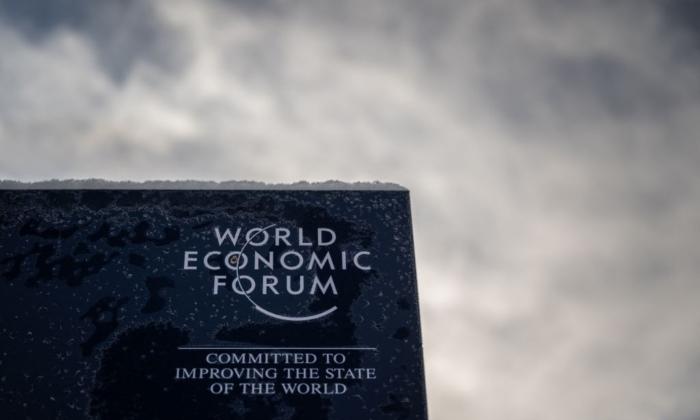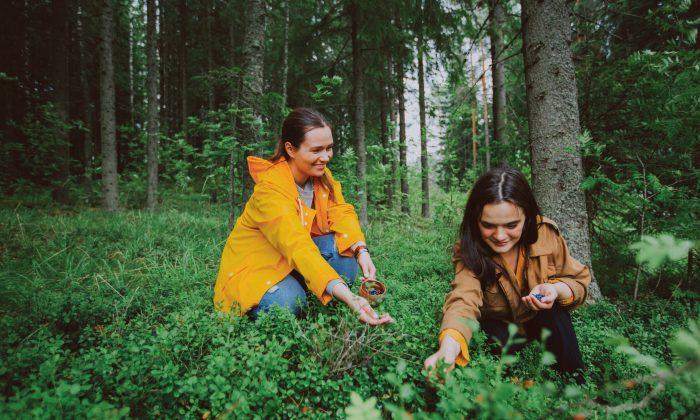In recent times, the Davos elites have been pushing the idea of a new economy, one that is circular in nature. Should we be concerned?
Commentary
As the British politician David Cameron
famously asserted, “The economy is the start and end of everything.”
To control the economy is, in many ways, to control the world.
Although no one government or organization controls the world’s economy, a few major players help shape it.
One of the major players, as many readers know, is the World Economic Forum (WEF). In recent times, the Davos elites have been pushing the idea of a new economy, one that’s circular in nature. Should we be concerned?
Some could say that the circular economy is an “agenda.” According to a
recent report published by the WEF and Accenture, it is. The authors of the report said this is an “agenda” and that the directions must “come from the top.” A circular economy is the antithesis of today’s economy—or, as the authors of the report call it, the “linear economy.”
“The transition to circular business models is,” we’re told, “a critical lever for organizations to achieve climate commitments and reach net-zero emissions.”
To reduce greenhouse gas emissions, the WEF and Accenture suggested “changing how goods are produced and consumed.” Circularity, they said, “plays a critical role in this.”
The report goes on to state that the existing “take-make-waste” model, which is “extractive and resource-intensive,” must be replaced. The key to replacing the existing model involves embedding “circularity in decision-making throughout the value chain.” In other words, a top-down approach, overseen, in part, by unelected globalists. If real democracy is predicated on a
bottom-up approach, then, one wonders, what are we to make of this recent report?
“This systemic transition,” the authors noted, “requires companies to embed circularity at all levels and functions throughout the organization. Starting from the top, there should be clear governance, leadership and accountability.”
What’s the goal here? The circular economy appears to be associated with the idea that all
products become services, with those at the very top of the mountain maintaining ownership of the products that normal, everyday people can only rent. Remember, not that long ago, the WEF stated: “You’ll Own Nothing. And You’ll Be Happy.”
In August, the WEF’s
Sean Mowbray discussed how the circular economy could address “rampant overconsumption,” “climate change, biodiversity loss, and the pollution of land, air and oceans.”
This crisis, he suggested, requires “sustainable production cycles” that will “reduce resource use, waste, and ecological harm.”
At its core, according to Mr. Mowbray, the circular economy revolves around the three R’s: reducing, reusing, and recycling materials. The circular economy model, he said, “aims to eliminate waste and pollution, recirculate products and materials, and regenerate nature.”
Although nature should be protected, and the idea of wasting resources isn’t something to be championed, one can’t help but feel a sense of dread when reading Mr. Mowbray’s words. The constant references to “climate change” and “decarbonization” and the calls to drastically alter agricultural practices carry an impersonal, somewhat chiding tone.
Keeping waste to an absolute minimum, we’re informed, is a must. But, one wonders, who dictates how much waste is too much waste? And who gets to decide what constitutes waste and what constitutes harm?
Take meat, for example. For many readers, I’m sure, the consumption of chicken, pork, and beef has an important place in their lives. However, in a circular economy, meat
may no longer have any place whatsoever. After all, it’s wasteful and bad for the environment,
experts say. Lab-grown meat, which is estimated to have
a considerably larger carbon footprint than typically butchered beef, is a viable alternative, they suggest. If the WEF
has its way, we’ll all be eating lab-grown grub not long from now.
It has become increasingly common to correctly identify problems but offer wholly unreasonable solutions. Capitalism, in its current form, is destructive. So socialism is the answer. Traditional farming methods are harmful, so lab-grown meat is the solution. The United States was once extremely racist, so financial reparations must be made. And so forth.
Nevertheless, the
WEF insists that the circular economy, closely aligned with the nefarious idea of
social justice, is a viable alternative to the current model. According to the decision-makers in Davos, Switzerland, the circular economy represents “a seismic shift in the way we conceptualize the entire life cycle of a product, designed to benefit businesses, society and the environment.”
This “seismic shift” could involve closer monitoring of our actions and behaviors, and the introduction of carbon passports, for example. A new report by
Intrepid Travel discusses the concept of “personal carbon allowances” being introduced by 2040.
The White House appears to be
fully committed to the circular economy transition. Earlier this year, the White House Office of Science and Technology Policy hosted a roundtable designed to discuss the ways in which various circular economy innovations can contribute to, e.g., “decarbonization and net-zero goals.”
Again, although the environment should be protected, and waste should never be encouraged, one wonders how much say normal, everyday people will have in the circular economy. Considering the “agenda” is a top-down one, very little, I imagine.
Views expressed in this article are opinions of the author and do not necessarily reflect the views of The Epoch Times.







